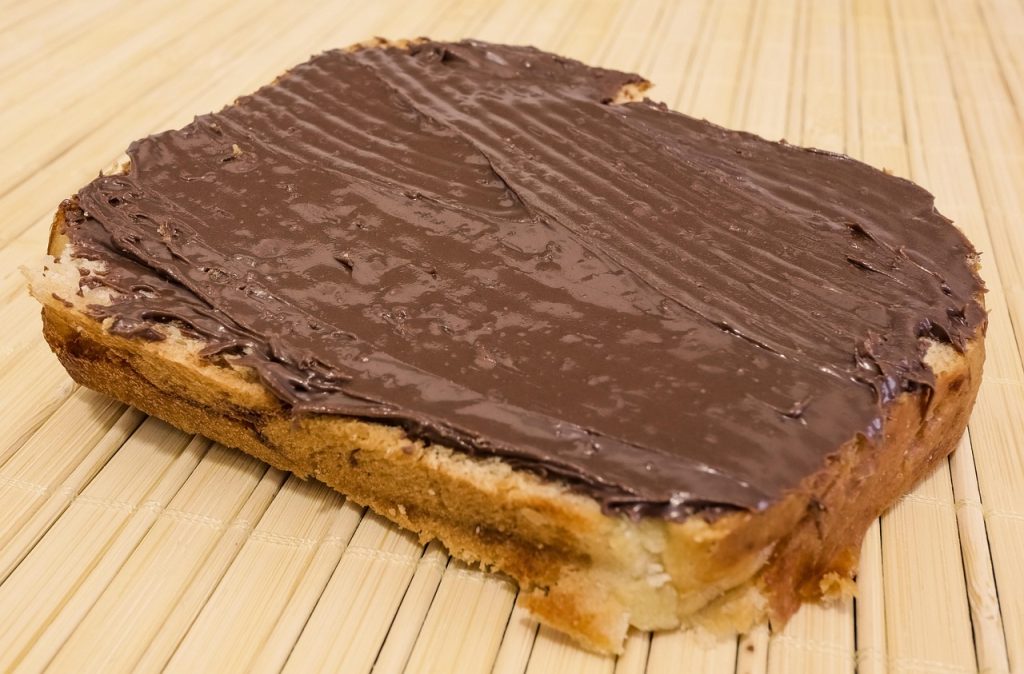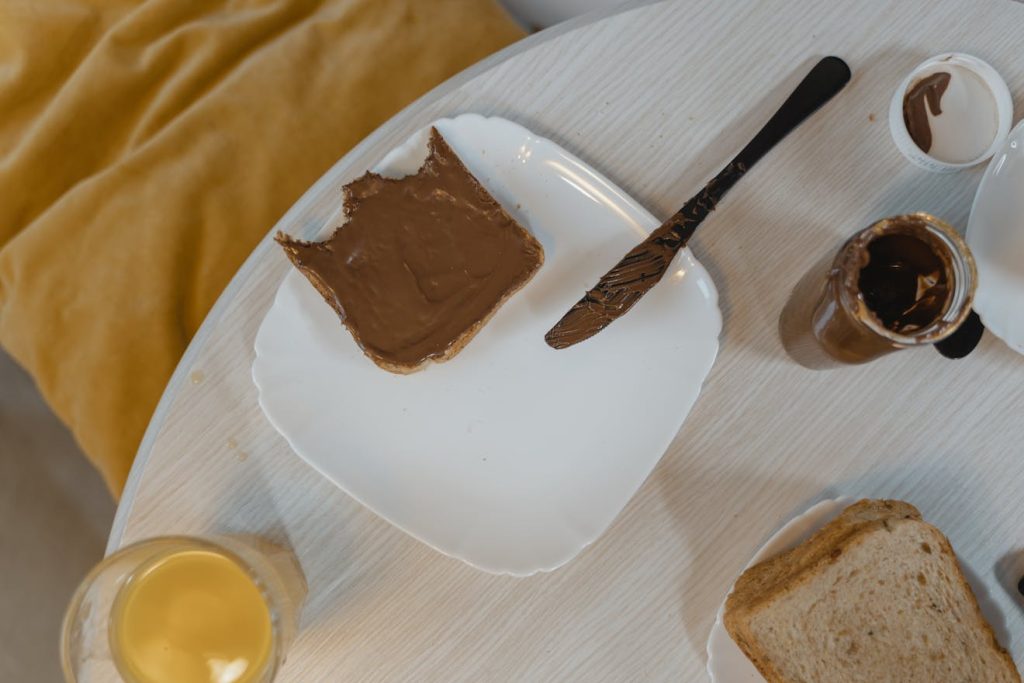Table of Contents
With its rich, creamy texture and irresistible flavor, chocolate spread evolution has become a beloved staple in kitchens around the world. They have transformed this versatile ingredient from a simple treat to a vital component in various confectionery creations. You will explore the fascinating history of chocolate spread, tracing its journey from its early origins to its current status as a global favorite. Additionally, they will probe into the myriad uses of chocolate spread in desserts, snacks, and gourmet recipes, showcasing its impact on the world of sweets.
The Historical Origins of Chocolate Spread

As he examined the lineage of chocolate spread, one could trace its origins back to ancient Mesoamerican cultures, where chocolate, derived from cacao beans, was revered. The Mayans and Aztecs consumed chocolate primarily as a drink, often flavored with spices and enjoyed by the elite. This foundational appreciation of chocolate laid the groundwork for its future transformations into various forms, including the beloved spread we know today.
- Early Uses of Chocolate
Chocolate was initially used as a bitter beverage, often combined with spices, by ancient civilizations in Mesoamerica. It was considered a luxury item, reserved for the affluent and used in rituals and ceremonies. The evolution toward solid forms began in Europe, where innovations in processing cacao led to sweeter variations that eventually transitioned into confections.
- The Birth of Modern Chocolate Spread
About a century ago, the first modern chocolate spread came into existence, crafted in Italy by combining chocolate and hazelnuts. This innovative mixture offered a creamy texture and a delightful flavor profile, captivating taste buds and spawning a culinary revolution. The spread quickly gained popularity, becoming a staple in households across Europe and beyond.
To better appreciate the rise of modern chocolate spread, one can consider the significance of the 1940s when Pietro Ferrero, an Italian confectioner, first introduced Nutella. His innovative approach of blending roasted hazelnuts with cocoa created a delightful spread that was both affordable and versatile. Drawing inspiration from regional ingredients, he capitalized on the availability of locally sourced hazelnuts during post-war shortages. This ingenious combination not only transformed breakfast routines but also paved the way for countless uses in desserts, spreads, and even savory dishes, establishing chocolate spread as a beloved item worldwide.
Key Ingredients in Chocolate Spread

While the charm of chocolate spread lies in its rich flavor and creamy texture, its success stems from a careful balance of key ingredients. These components work together to create a mouthwatering spread that delights palates around the world.
- Cocoa and Its Significance
Below the surface of chocolate spread lies cocoa, a defining ingredient that contributes a deep, bittersweet flavor. You can recognize that cocoa is not merely a flavoring agent; it embodies the essence of the spread. Its rich antioxidants and unique aroma enhance the overall experience, making it a favorite in desserts and snacks alike.
- Sweeteners and Texture Enhancers
Across the spectrum of chocolate spread, sweeteners and texture enhancers play an important role. He, she, and they understand that the balance of sweetness is vital for achieving that indulgent taste without overpowering the cocoa’s inherent flavor. Common sweeteners include sugar, honey, or alternative sweeteners, which complement the creamy base. Additionally, texture enhancers, such as vegetable oils or emulsifiers, contribute to a smooth consistency, allowing easy spreading and a luxurious mouthfeel.
This combination ensures that the spread remains adaptable for a variety of culinary applications, from breakfast treats to sophisticated desserts. This thoughtful approach towards sweeteners and texture enhancers reflects the evolution of chocolate spread. Manufacturers balance taste and texture intricately to cater to diverse consumer preferences.
Popular Varieties of Chocolate Spread

Assuming one takes into account the diverse preferences of consumers, chocolate spread has evolved into a plethora of varieties that cater to different tastes. From classic recipes that highlight the rich flavor of cocoa to innovative blends incorporating spices and unique ingredients, the options are virtually endless. Each variety offers a distinct taste experience, reflecting cultural influences and personal preferences of chocolate lovers worldwide.
- Classic Flavors and Regional Variations
An examination of chocolate spread reveals classic flavors like hazelnut and milk chocolate, synonymous with well-loved brands. Additionally, regional variations abound, showcasing local ingredients and culinary traditions. For instance, some regions boast chocolate spreads infused with exotic spices, while others incorporate fruits, providing a unique twist on a global favorite.
- Nut-Based and Alternative Options
Around the world, nut-based and alternative chocolate spreads are becoming increasingly popular, appealing to health-conscious consumers and those with dietary restrictions. These innovative products often feature rich flavors derived from almonds, cashews, or sunflowers, and may include minimal added sugars or natural sweeteners.
Varieties of nut-based and alternative chocolate spreads serve to broaden the appeal of this beloved treat, accommodating a spectrum of dietary needs. Producers continuously experiment with flavor combinations and ingredient sourcing to provide healthier choices without sacrificing taste. These options attract those seeking vegan, gluten-free, or low-sugar alternatives, showcasing the adaptability of chocolate spread in the modern culinary landscape.
The Rise of Chocolate Spread in Confectionery

To fully appreciate the prominence of chocolate spread in confectionery, one must consider its meteoric rise since the 20th century. Originally celebrated in Europe, chocolate spread soon captivated taste buds worldwide. Its adaptability in various culinary contexts has led to an explosion of creative applications, proving that this sweet treat transcends cultural barriers and has become a beloved pantry staple.
- Innovative Products and Pairings
Any true confectionery enthusiast can attest to the innovative products and pairings that have emerged alongside chocolate spread’s rise. Artisanal chocolate spreads infused with unique flavors like sea salt, coffee, or even chili have become popular, offering consumers unique taste experiences. Moreover, the trend of pairing chocolate spread with fruits, nuts, and various baked goods has led to a revitalized appreciation for this ingredient.
- Chocolate Spread in Baked Goods
Before arriving at the numerous ways chocolate spread can enhance baked goods, he or she must recognize its impact on the sweet baking landscape. Chocolate spread adds a rich, creamy texture to desserts like brownies, cakes, and cookies, transforming traditional recipes into indulgent masterpieces. Furthermore, its ease of use allows both novice bakers and seasoned professionals to explore new flavor profiles with minimal effort.
Due to its creamy consistency and rich flavor profile, chocolate spread has revolutionized the way bakers approach creating desserts. Toys in the kitchen, chocolate spread can provide moisture and depth to cakes, serve as a luscious filling for pastries, or even act as a topping for pancakes and waffles. Innovators in baking continuously explore the possibilities presented by this ingredient, inspiring adventurous recipes that captivate dessert lovers.
Health Considerations and Nutritional Value
Once again, consumers are advised to evaluate the health implications of chocolate spread, which often contains significant amounts of sugar and fat. While it does deliver energy and pleasure, the nutritional value can be overshadowed by the potential for excess calorie intake. Moderation is key, as frequent consumption can lead to dietary imbalances, particularly in children and those monitoring their health. Awareness of ingredient quality, including the presence of natural versus artificial additives, is important for anyone seeking to enjoy this global favorite responsibly.
- The Caloric and Sugar Content
Between the sweetness and creaminess of chocolate spread lies a high caloric density, often derived from both sugar and fat. Typically, a standard serving can contain upwards of 100 calories, with a significant portion attributed to added sugars. This concentration of energy can easily contribute to exceeding daily sugar recommendations, especially for young consumers and those with active lifestyles. Evaluating nutrition labels is imperative for understanding the precise caloric and sugar intake associated with each brand.
- Alternatives and Healthier Options
The growing awareness of dietary health has led to the emergence of various alternatives to traditional chocolate spreads. Nut-based spreads, for instance, offer a source of healthy fats and proteins while maintaining a similar flavor profile. Fruit spreads and chocolate spreads sweetened with natural sweeteners present appealing options for those looking to reduce sugar intake. Consumers are encouraged to explore these alternatives to find choices aligning better with their health objectives.
Considering the increasing demand for healthier choices, brands have begun to innovate by creating alternatives that cater to diverse dietary preferences. For instance, some manufacturers now offer organic chocolate spreads that rely on minimal processing and natural ingredients. Additionally, spreads incorporating superfoods or functional ingredients can provide added nutritional benefits without sacrificing taste.
Cultural Impact and Global Reach
Many cultures have embraced chocolate spread, transforming it from a simple treat into a beloved staple. Its appeal transcends borders, with local variations and unique culinary practices promoting creativity. The rise of global brands has encouraged shared experiences, allowing individuals from diverse backgrounds to enjoy chocolate spread’s rich flavors and textures, thus fostering a sense of community and connection among chocolate lovers worldwide.
- Chocolate Spread Around the World
At the heart of many households around the globe, chocolate spread is celebrated for its versatility and delectable taste. In countries like Italy, it is often paired with bread for breakfast, while in France, it is used to enrich crepes. Elsewhere, in the United States, chocolate spread serves as a creative ingredient in desserts, reflecting regional preferences and adaptations that showcase its universal appeal.
- Marketing Trends and Consumer Preferences
The popularity of chocolate spread has driven focused marketing strategies that cater to evolving consumer preferences. Brands have transitioned towards offering healthier options, including organic and nut-based spreads, to address growing health consciousness. They have also leveraged social media to engage younger audiences, showcasing innovative recipes and ways to enjoy chocolate spread, ultimately enhancing its appeal across various demographics.
This evolution in marketing trends reflects a shift in consumer behavior, as buyers increasingly seek products that align with their values, such as sustainability and health. Consequently, brands invest in transparent labeling and ethical sourcing practices, ensuring that they meet the demands of an informed customer base. By tapping into diverse lifestyles and dietary choices, marketers adapt their strategies, reinforcing chocolate spread’s presence in daily consumption while exploring new avenues for growth.
Summing up
Ultimately, the evolution of chocolate spread showcases its transformation from a simple indulgence to a staple in confectionery across the globe. Embraced its versatility, utilizing it in a range of recipes from pastries to savory dishes. Appreciate how chocolate spread has become a beloved topping, inviting creativity and experimentation in the culinary world. They acknowledge its significant impact on consumer culture, fueling a worldwide passion for this delectable treat that continues to inspire both home cooks and professional pastry chefs alike.